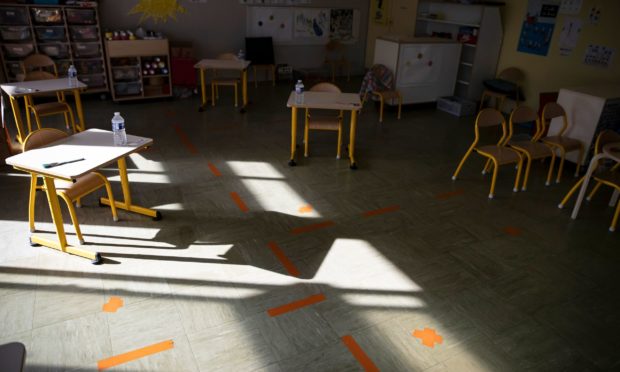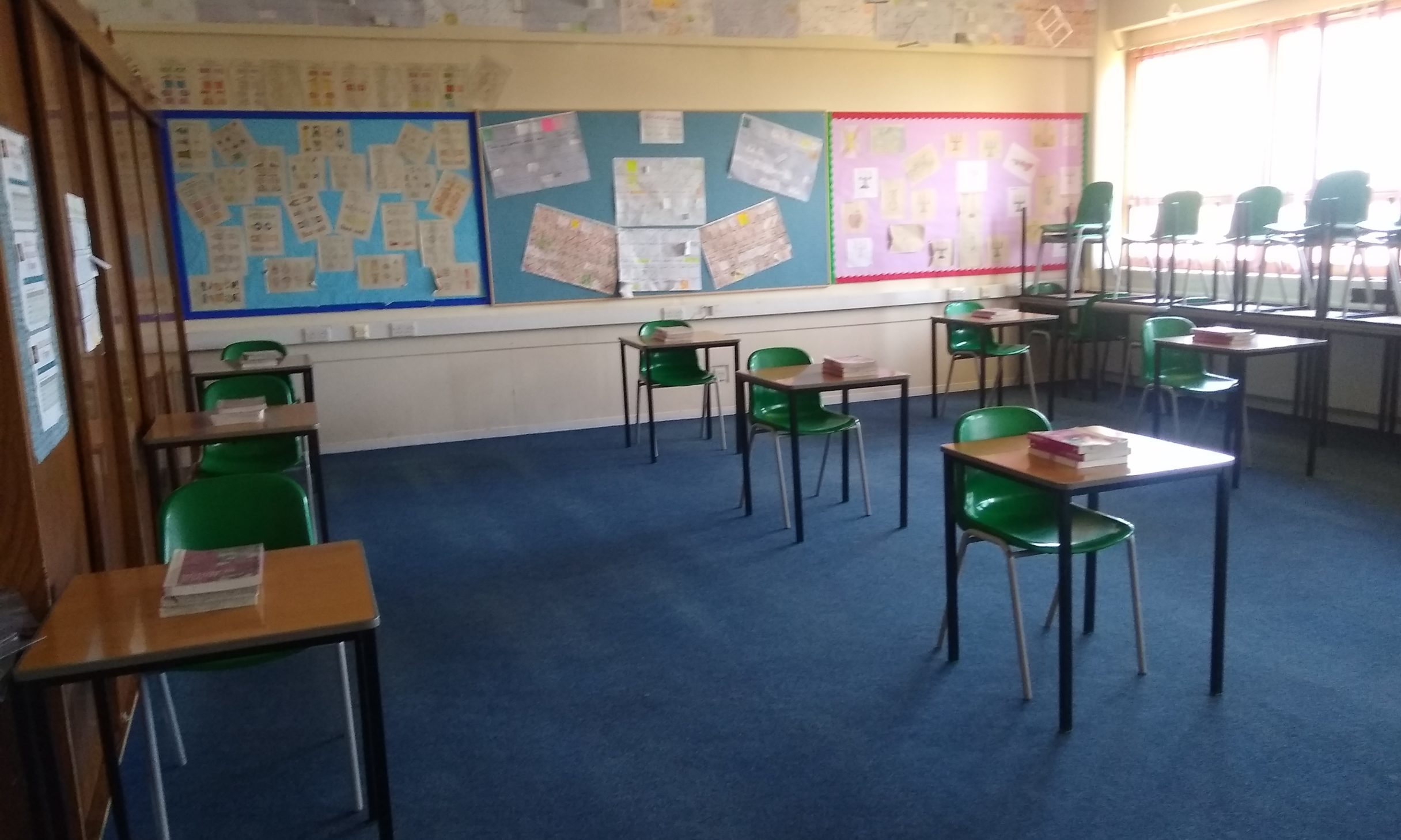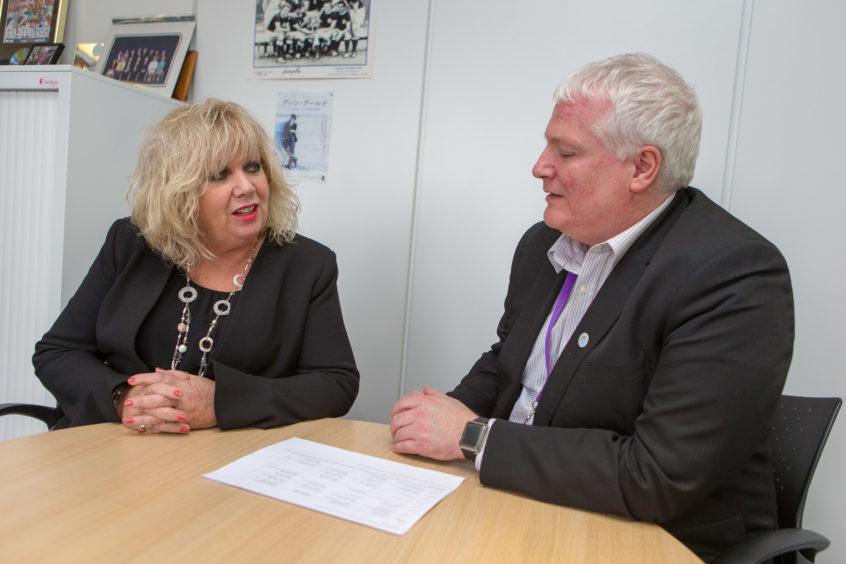Children across Tayside and Fife will return to school from August 11, more than 20 weeks after they were told to stay at home.
For some it will be their first day in nursery, P1 or secondary school – a milestone in their lives – but the transition will be very different from how they and their parents might have imagined.
Teachers and education officers are planning how classrooms will be arranged to minimise contact and protect pupils and staff.
Pupils will spend some time at school and some learning at home, using a blended model of education.
While the Scottish Government wants pupils at school for at least half the time, local authorities and individual schools are developing their own models for blended learning, with some further forward than others.
Here we take a look at how our councils propose their pupils will return.
Fife
In Fife some pupils will return on August 12, after teachers return on August 10.
For nursery children it is proposed they will have two days or two sessions, with variations between the 600 hours and new 1,140 hours provisions.
As the youngest children can’t be expected to maintain physical distancing, they will be kept in smaller groups to minimise contact and enhanced hygiene will be promoted.
Primary school children will have two days at school at week, with half in on Mondays and Tuesdays and half in on Thursdays and Fridays. Wednesdays will be used for cleaning and to prepare blended learning.
Secondary school pupils will return for only one day a week initially, until no later than the end of August. Attendance will be increased in two stages, from 20% to 40% of pupils in at any one time, moving towards a full timetable with 50% or more in school.
Fife Council said the transport requirement, larger school populations and the availability of some specialist subjects made the return of secondary school pupils much more complex.
Pupils in additional support departments and special schools will return initially for two days a week, and the council said individuals’ needs would be taken into account to ensure support.
Angus
Schools in Angus will each take a “unique” approach to blended learning, as head teachers prepare to welcome many students on August 12.
The council have said not all children will return to the classroom on this date due to physical distancing.
Children will be taught through a blended learning model which will not be solely dependent upon digital access or help from parents or carers and will feature a mix of in-school lessons and home studying.
Primary pupils will play and learn together in small groups called bubbles as Angus Council acknowledged the difficulties younger children may face with physical distancing.
Parents at Monifieth High School have been asked to vote on a preferred back-to-school method.
The first would see junior pupils in school on Monday and Tuesday, while seniors learn at home.
Pupils would switch on Wednesday and Thursday, where seniors will enter classrooms.
In the second option, junior pupils will be in school on Monday, Tuesday, Wednesday and Thursday one week, and senior pupils the next.
Both plans outline Friday as a designated in-school day for targeted groups of learners and children of key workers.
Across Angus, capacity assessments have been carried out to determine how many pupils and teachers can work in a classroom each day – but some schools may be able to accommodate children more frequently than others.
Schools will aim to have siblings attending on the same day and will make use out of outdoor spaces and other areas to “maximise safe attendance levels”.
Staggered starts, breaks, lunches and finish times are also expected to be rolled out.
Dundee
Dundee city council are also planning a blended approach to learning when the new school year begins in August and preparations are already under way this week to put in place social distancing measures in schools.
But education chiefs admit the approach could vary from school to school and is dependent on the size and head count of the individual schools.
Speaking earlier this month, Audrey May – the chief education officer at the council – said: “From June 15 the schools will be open for staff, so in the two weeks from then until the summer break they will be preparing for the pupils coming back in August.
“In these two weeks, the only children that are likely to come into the school are small groups of those pupils in key transitional stages such as new primary ones and maybe senior secondary pupils.
“But this will be for very short periods of time and the work for these pupils that might be transitioning into primary or secondary schools will continue into August.”
Speaking of the plans being drawn for welcoming pupils back in August, Ms May added: “Not all schools are the same size so it could be the case that some will split the kids into three groups and have 30% of their pupils in at any given time, and others could have up to 50%.
Not all schools are the same size so it could be the case that some will split the kids into three groups and have 30% of their pupils in at any given time, and others could have up to 50%.”
Audrey May
“Individual schools will come up with their own plan for what’s best for their own children and community which they will share with parents and families.’
Councillor Stewart Hunter, who acts as the city council’s education spokesman, said: “Our priority is the safety of our staff and the young people, that is behind everything that we are doing.
“What might work in one school, might not work in another so each of them will bring out their own plan.”
Perth and Kinross
Perth and Kinross schools will reopen for pupils on August 11, with staff returning a day earlier.
The number of pupils in school at any will time vary from school to school, with some able to offer more time in class than others.
Individual head teachers are shaping how their school will operate to comply with Scottish Government guidance, including physical distancing.
Where possible schools will use other spaces and outdoor areas to maximise attendance. Staggered starts, breaks, lunch and finishing times may be used and some schools may not require uniform to be worn.
Younger primary school children will play and learn together in small groups and secondary pupils will be required to remain on site over lunchtimes.
All children will receive high-quality in-school learning complemented by a programme of at home learning, this will be known as blended learning.”
Sheena Devlin
One day a week will be allocated to staff to support home learning and targeted groups, for example practical science lessons, literacy support and support for wellbeing.
Sheena Devlin, executive director for education and children’s services, told parents: “All children will receive high-quality in-school learning complemented by a programme of at home learning, this will be known as blended learning.
“Schools will share clear and timely information related to timetables and attendance rotas to allow families to make practical arrangements.”













